The Japanese have a different relationship with fruit than most cultures. Fruit, especially melons, are given as gifts, and some fruits are even cultivated as luxury items.
A while back, I stumbled upon a photo essay about an apple orchard in Japan that kind of gives a good example of the kind of hard work that people put into growing luxury fruit.
Blossoms are pollinated by hand, using tiny wands; every apple is placed in its own, individual paper bag to protect it from the elements; and little stencils are applied to each apple so they bear little kanji.
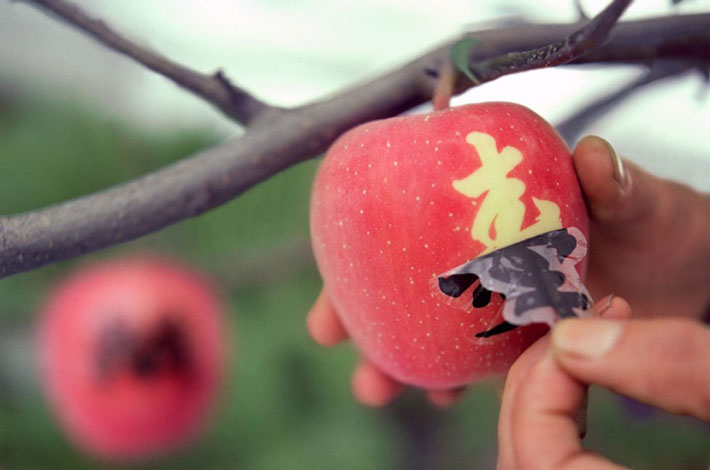
And this particular orchard isn’t some sort of anomaly. Both The New York Times and the BBC have covered Japanese farms that cultivate high-end fruit.
As a result of the great care people put into cultivating fruit, the price tag can sometimes be a bit of a shock. High-end melons can sell for outrageous prices (as expensive as $6,000 for a single melon).
But beyond Japan’s luxury fruit market, there’s also a lot of common, everyday fruit in Japan that you’ll be hard-pressed to find anywhere else. Some are rarities that occur naturally in Japan; others, specifically engineered to taste delicious or look just the right way.
Akebi
The Akebi might look almost like an eggplant, but it’s actually a pretty curious fruit. Native to the northern Tohoku region of Japan, people didn’t start seriously cultivating the akebi until pretty recently.
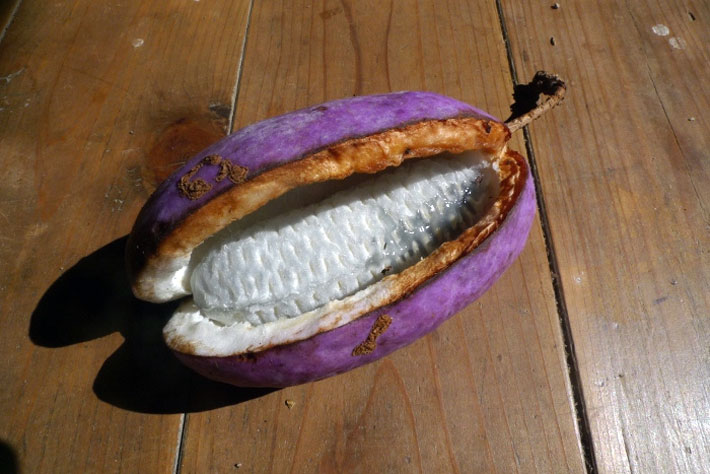
Beneath the purple skin (which opens naturally when wild akebi are ripe) is the strange fruit. It looks like a small, milky-white banana.
(“Small, milky-white banana,” by the way, is a phrase I hope I never write again.)
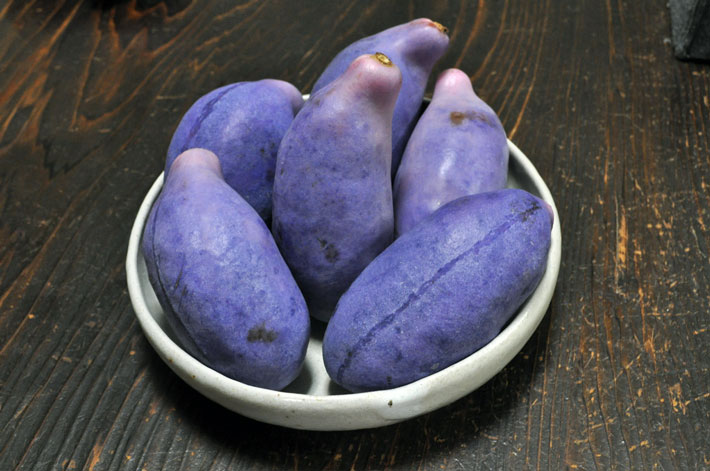
The taste is sadly, apparently unremarkable. And the texture is a bit strange, as Kyoto Foodie explains:
The look and feel is similar to the flesh of lychee, but is much softer. And, it is full of tiny seeds that are essentially impossible to separate from the flesh…The flesh is best slurped up seeds and all. If the seeds are chewed, the taste becomes bitter. Just eat it like you would yogurt or thick fruit smoothie.
Sure, the akebi might not taste incredible, but I still think it’s pretty cool that akebi are so distinctive and hard to find outside of Japan.
Dekopon
On its surface, the dekopon is a pretty boring fruit – it basically just looks like an orange. But there’s more to it than that. Dekopon is uniquely Japanese – it’s actually a hybrid of two other citrus fruits engineered in Japan during the 70s. And while it looks like a regular ol’ orange, it’s larger and sweeter than your everyday Florida-grown citrus.
Probably the coolest thing about the dekopon, oddly enough, is its etymology – where the name came from. The kanji for deko is 凸. With the little bump at the top, it looks like a miniature picture of a dekopon, doesn’t it?
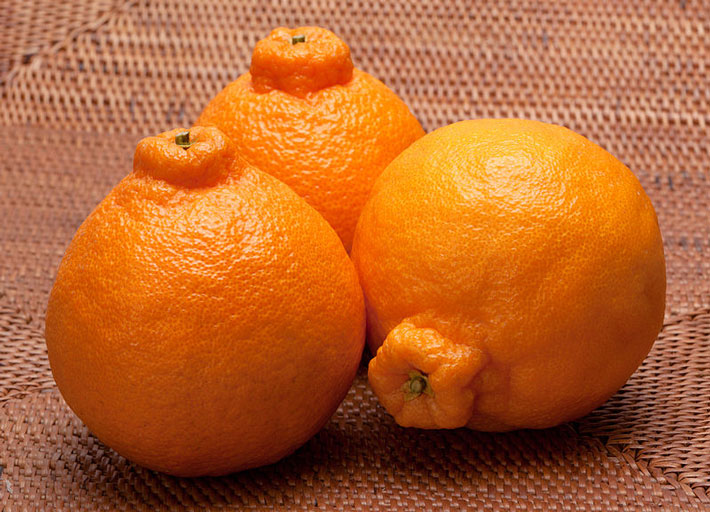
Sadly for those of us in the United States, the dekopon wasn’t available in the US until just last year. As it turns out, importing a fruit from abroad is a fiasco when it comes to obtaining the rights and making sure the fruit doesn’t completely annihilate the native ecosystem.
And, even more unfortunately, dekopon is basically only available in California for the time being (under the new name “sumo”), meaning I haven’t had a chance to taste one yet. Will I make the eight hour drive down to the Golden State for a sample? Time will tell.
Square Watermelon
There’s probably no more famous fruit in Japan than the square (technically, cubic) watermelon. Developed in the 70s by Japanese farmers who were hoping to create an easier way to store and ship melons, these melons are placed in cubic, glass containers and grow to fill the space.
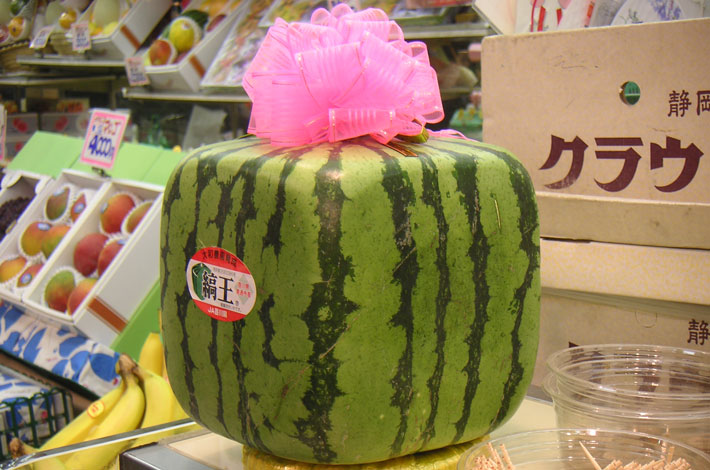
While the goal of these watermelons was to make them more convenient, it turns out that growing cubic watermelons is harder than growing regular melons. On the upside, these novelty fruits are really popular, and farmers can charge out the rear for them. Sure, they taste the same, but they’re cubic!
Hyuganatsu
The hyuganatsu has kind of a weird history. Unlike other fruit, which have either been around for as long as people remember of have been actively engineered, the hyuganatsu was just sort of discovered. In 1820, people found a tree with a fruit that had never been seen before.
People now speculate that hyuganatsu is a naturally occurring hybrid of yuzu and pomelo. As Jeff Goldblum in Jurassic Park says, “life finds a way.”
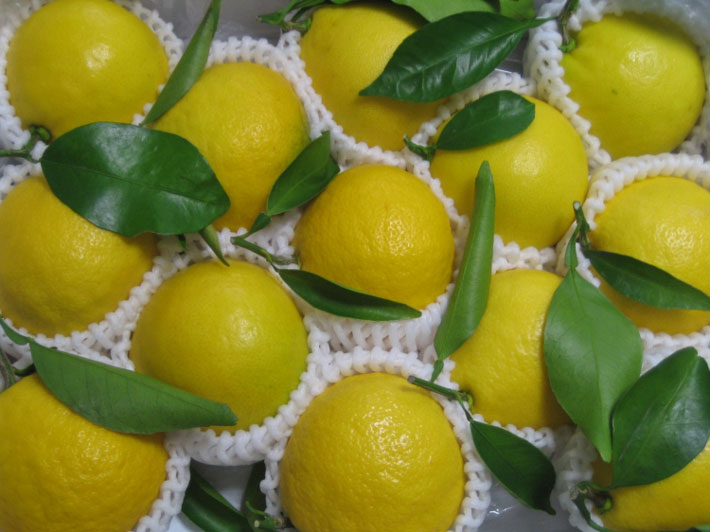
As with dekopon, hyuganatsu is, for the most part, simply another citrus fruit. It’s yellow with a slightly sour taste – in fact, people recommend that you eat hyuganatsu with some sugar just so it isn’t too sour.
But, as far as I could tell, hyunganatsu is uniquely Japanese. There aren’t names for it in other languages and I don’t think that it’s grown anywhere else. It might not be the tastiest thing in the world, but it is very Japanese.
